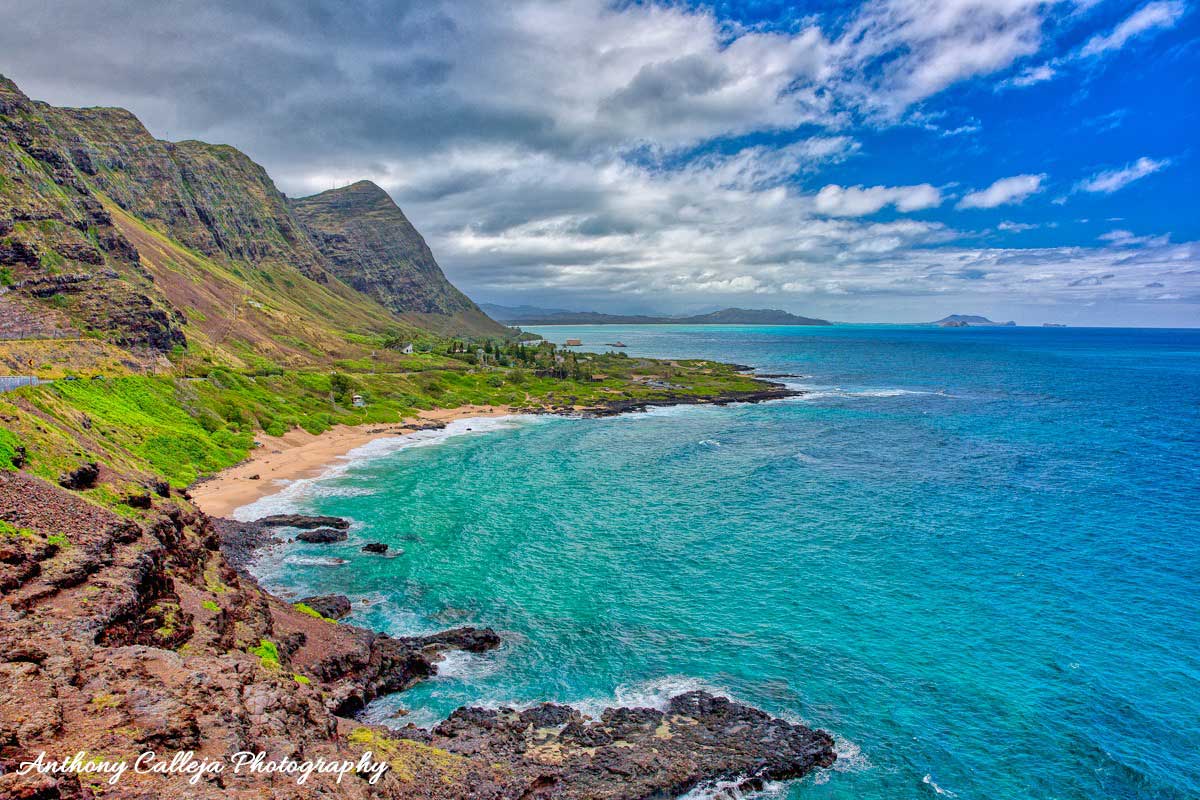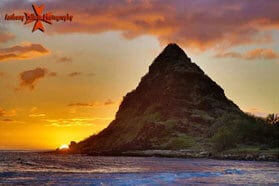Oahu Mountains:
See: Travel Photography - Punchbowl National Cemetery - Nisei Soldier Congressional Medal - Iwo Jima Memorial - Oahu Landmarks - King Kamehameha - Diamond Head - Manoa Falls - Lyon Arboretum - Kualoa Sugar Mill - Chinamans Hat Island - Hanauma Bay - Lanai Lookout - Oahu Cliff Jumpers - Kakaako Graffiti Art - Hokulea - Aloha Tower - Oahu Lighthouses
 Oahu, one of the six Islands of Aloha, covers an area of 597 square miles and is divided into five main regions: Honolulu, the North Shore, the Windward Coast, Central Oahu, and the Leeward Coast. Notably, the renowned Waikiki neighborhood is located within greater Honolulu.
Oahu, one of the six Islands of Aloha, covers an area of 597 square miles and is divided into five main regions: Honolulu, the North Shore, the Windward Coast, Central Oahu, and the Leeward Coast. Notably, the renowned Waikiki neighborhood is located within greater Honolulu.
The island of Oahu comprises two major mountain ranges, the Waianae range to the west and the Koolau range to the east, which once were shield volcanoes but are now extinct. These ranges run parallel to each other, with over a hundred ridges extending from their spines, forming picturesque valleys and breathtaking mountain views.
The Waianae range, the older of the two, separates Central Oahu from the Leeward Coast and is about four million years old. The leeward side is typically warmer and drier than the east.
The Koolau range, which spans the eastern coast of the island, runs for approximately 34 miles from Kahuku in the north to Makapuu in the south. It separates the Windward Coast from Central Oahu. On the windward side, constant gales have shaped the landscape over thousands of years, creating stunning rock faces, ridges, and cliffs. The Nuuanu Pali Lookout provides a fantastic view of the Koolau cliffs. Presently, the Windward Coast is the island's wetter and greener region.
Oahu also features several smaller extinct volcanic outcroppings scattered throughout the island in the form of volcanic cones and heads, usually no taller than 1,000 feet and one mile in diameter. Among the most well-known are Leahi (Diamond Head) and Punchbowl craters, both popular tourist attractions. Koko Head crater, the youngest at approximately 32,000 years old, sits on the island's youngest part.












